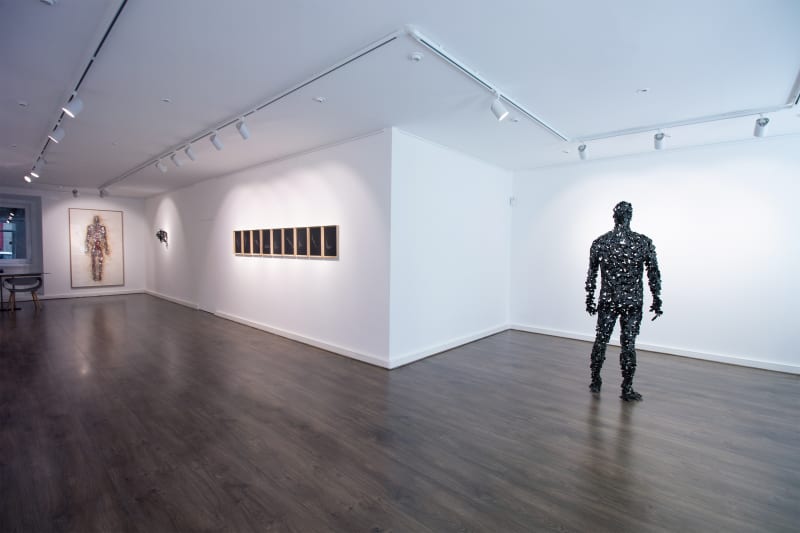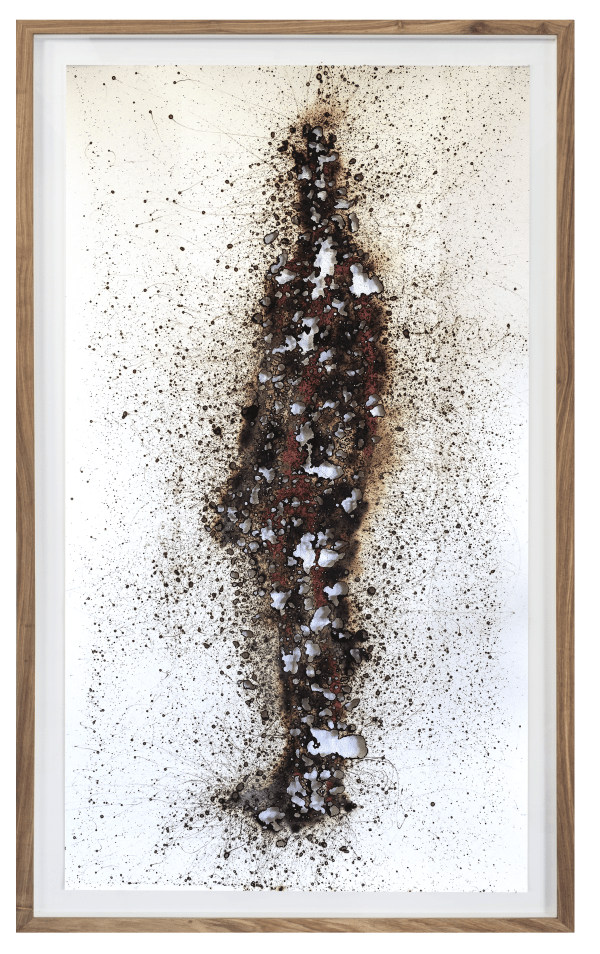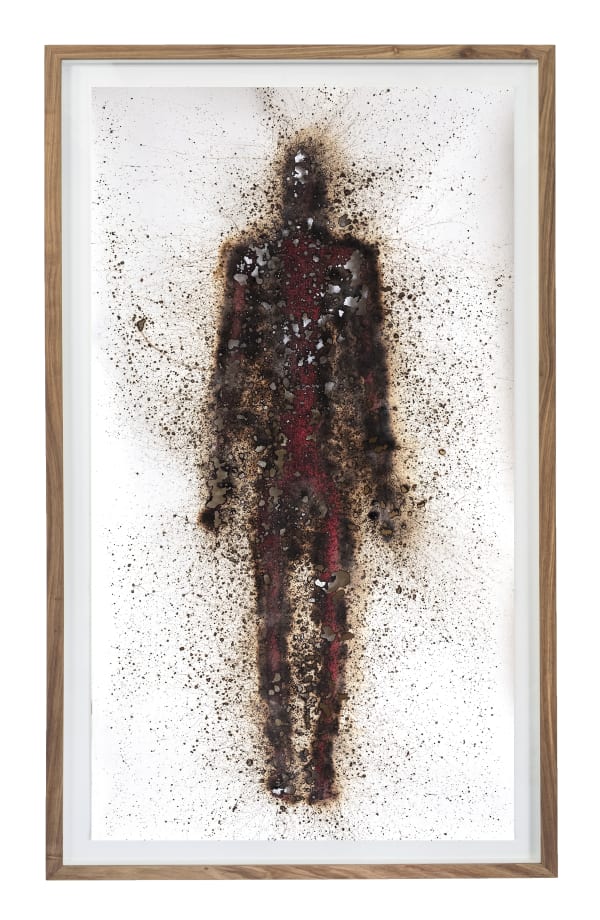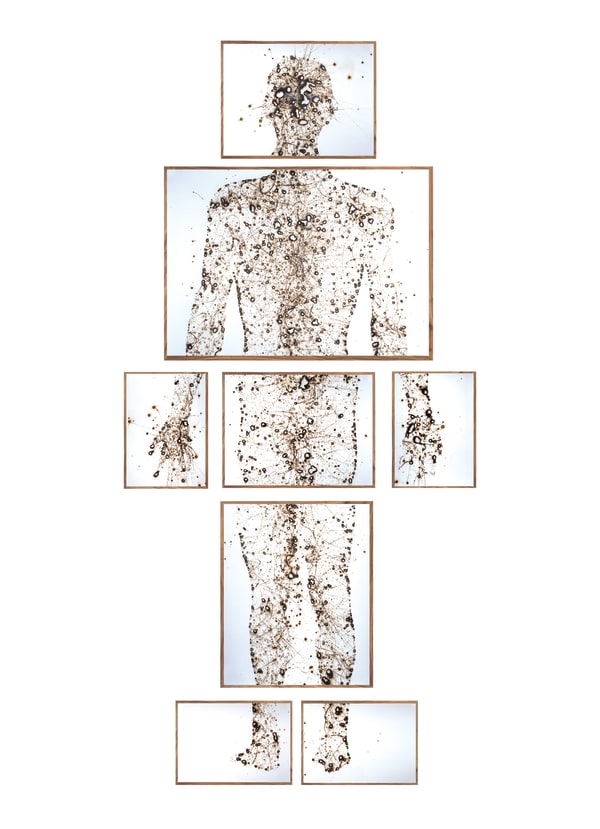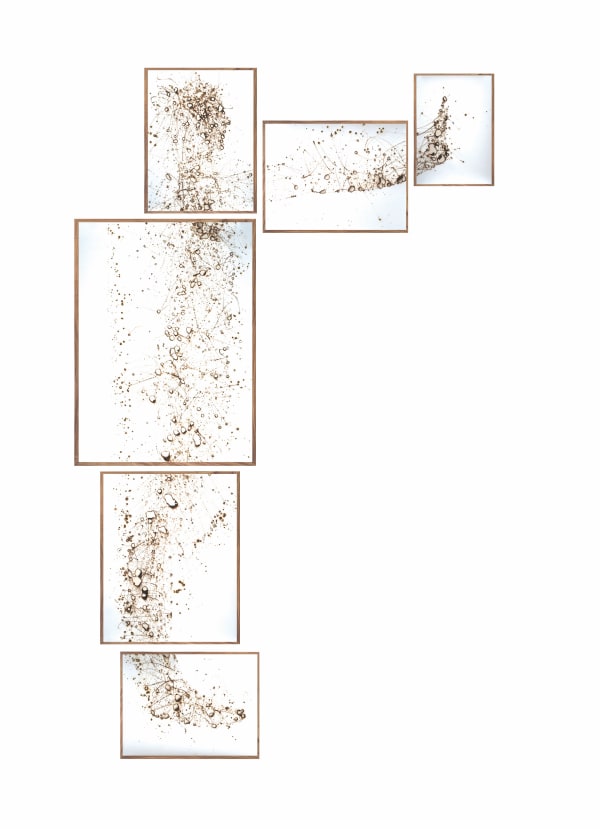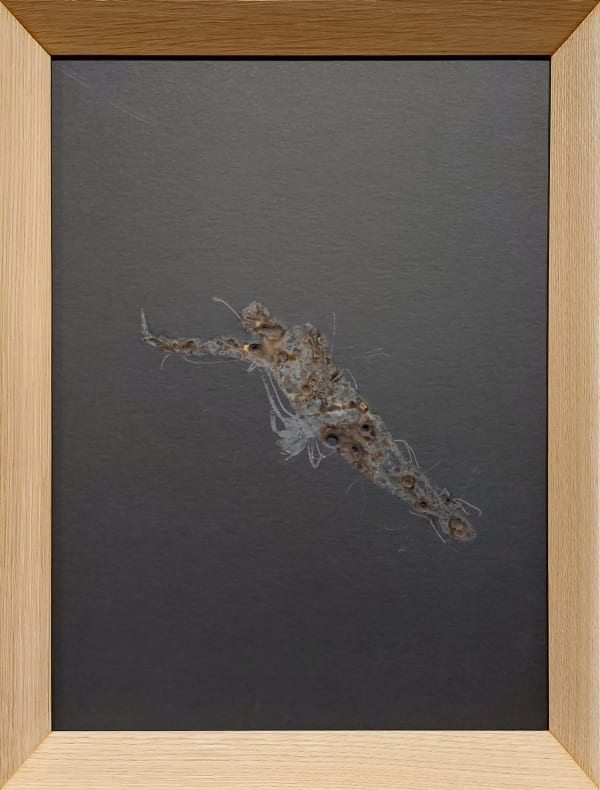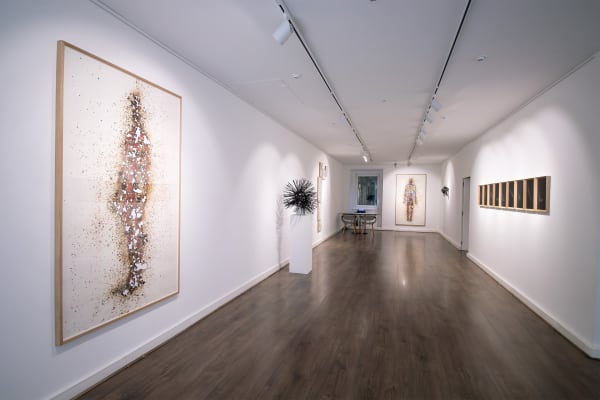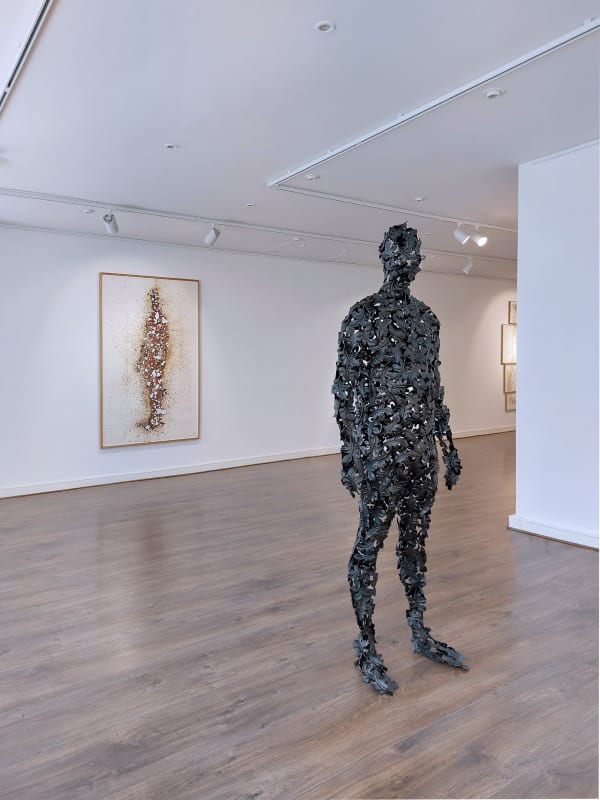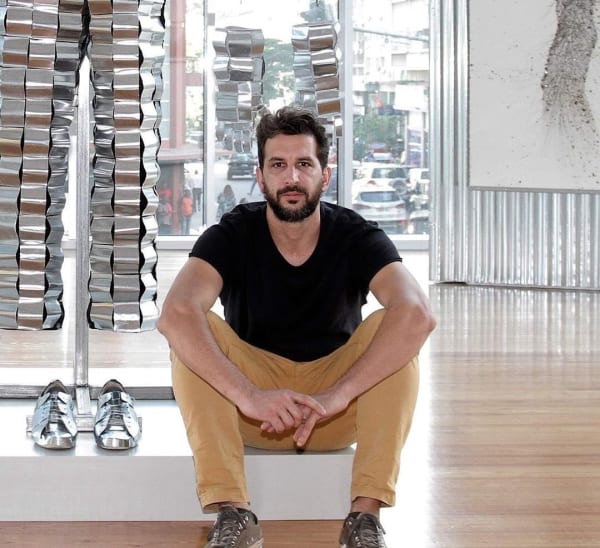The Green Line: SOLO SHOW: PEDRO PIRES
"THE GREEN LINE", a solo exhibition by the Luso-Angolan artist Pedro Pires, marks his return to the Portuguese capital after more than a decade of a growing presence in the international art scene. The exhibition is curated by Lourenço Egreja.
Archaeology, the study of ancient civilizations through material means, has its origins in the human curiosity, sometimes obsessive, of some individuals for the research of lost cultures. For example, Giovanni Battista Belzoni (1778-1823) was an explorer who worked in circuses in the United Kingdom, in the entertainment industry and who, given his engineering background, was eventually hired to transport the famous bust of Ramses II weighing more than two tons in a couple of days. This work is still in the British Museum today, and Belzoni became famous for this achievement and for having his name engraved behind one of the ears of the bust. He was also known for not using explosives when opening graves and for having discovered the entrance to the pyramid of Quefren, in 1818, in which he also left his name engraved so that he would not be deprived of the credit for such an incredible discovery. He also moved thousands of objects from Egypt to the United Kingdom.
Although many consider Belzoni a tomb thief, some believe that it was with him and others like Flinders Petrie (1853-1942) and his famous studies on Egyptian daily life or even with Lord Elgin (1766-1841) best known for having removed a considerable portion of the sculptures from the Parthenon of Athens, which today can be found in the British Museum under the name of Parthenon Sculptures, that the systematic interest in the discovery and inventory of objects from lost civilizations began. Such interest, anthropological, scientific, or even commercial, was the core of the fascination for ancient objects. The passage of time or the patina effect played an important role in revelation of these objects to the Western world with Museums and collectors becoming the tastemakers of the time.
Pedro Pires' drawings, through their form and also by the technique, present us with images of upright human bodies, in groups or individually, which transport us to other distant times. To the times of the first archaeological discoveries and of the adventurers referred above. The chromatic interventions made by the artist seem to indicate the passage of time and the effect of patina, unveiling that distant and mysterious past. Who are these anonymous figures that the artist presents us with? Are they figures of today's times?
-
 Pedro Pires, Antifragility - expansion #1, 2021
Pedro Pires, Antifragility - expansion #1, 2021 -
 Pedro Pires, Inner expansion #1, 2020
Pedro Pires, Inner expansion #1, 2020 -
 Pedro Pires, Inner expansion #2 , 2020
Pedro Pires, Inner expansion #2 , 2020 -
 Pedro Pires, Fractional, 2022
Pedro Pires, Fractional, 2022 -
 Pedro Pires, Wall, 2022
Pedro Pires, Wall, 2022 -
 Pedro Pires, Border Series 136, 2022
Pedro Pires, Border Series 136, 2022 -
 Pedro Pires, Border Series 657.13, 2022
Pedro Pires, Border Series 657.13, 2022 -
 Pedro Pires, Where are we now #2, 2021
Pedro Pires, Where are we now #2, 2021 -
 Pedro Pires, Border #317.2, 2021
Pedro Pires, Border #317.2, 2021 -
 Pedro Pires, Boden, Wand, Ecke, Raum Series, 2022
Pedro Pires, Boden, Wand, Ecke, Raum Series, 2022 -
 Pedro Pires, Boden, Wand, Ecke, Raum Series, 2022
Pedro Pires, Boden, Wand, Ecke, Raum Series, 2022 -
 Pedro Pires, Boden, Wand, Ecke, Raum Series, 2022
Pedro Pires, Boden, Wand, Ecke, Raum Series, 2022 -
 Pedro Pires, Boden, Wand, Ecke, Raum Series, 2022
Pedro Pires, Boden, Wand, Ecke, Raum Series, 2022 -
 Pedro Pires, Boden, Wand, Ecke, Raum Series, 2022
Pedro Pires, Boden, Wand, Ecke, Raum Series, 2022 -
 Pedro Pires, Boden, Wand, Ecke, Raum Series, 2022
Pedro Pires, Boden, Wand, Ecke, Raum Series, 2022 -
 Pedro Pires, Boden, Wand, Ecke, Raum Series, 2022
Pedro Pires, Boden, Wand, Ecke, Raum Series, 2022 -
 Pedro Pires, Boden, Wand, Ecke, Raum Series, 2022
Pedro Pires, Boden, Wand, Ecke, Raum Series, 2022 -
 Pedro Pires, Boden, Wand, Ecke, Raum Series, 2022
Pedro Pires, Boden, Wand, Ecke, Raum Series, 2022 -
 Pedro Pires, Boden, Wand, Ecke, Raum Series, 2022
Pedro Pires, Boden, Wand, Ecke, Raum Series, 2022

